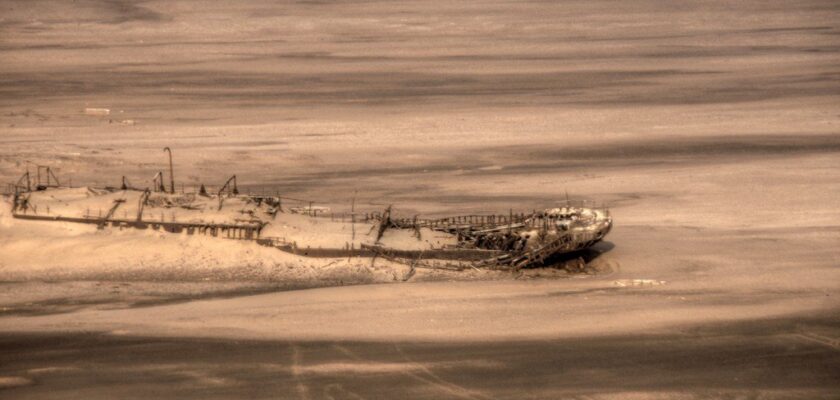Skeleton Coast
The Skeleton Coast in Namibia stretches 500 kilometers south from the Kunene River to the Ugab River. It is one of the most uninviting and least visited places on the planet. The aptly named coastline is famous for its many shipwreck remains.
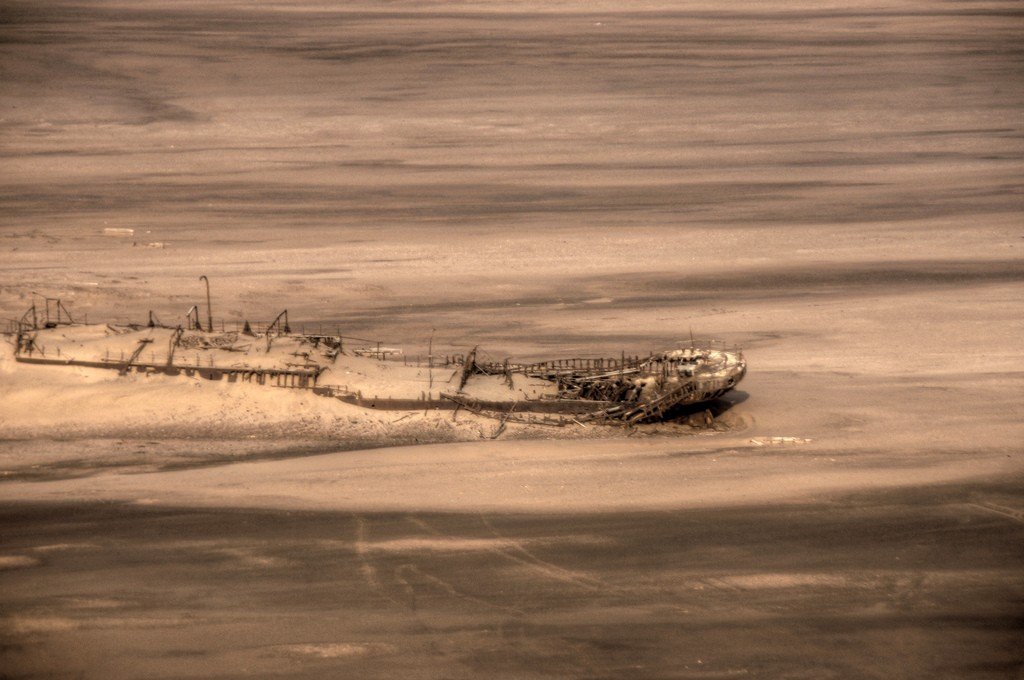
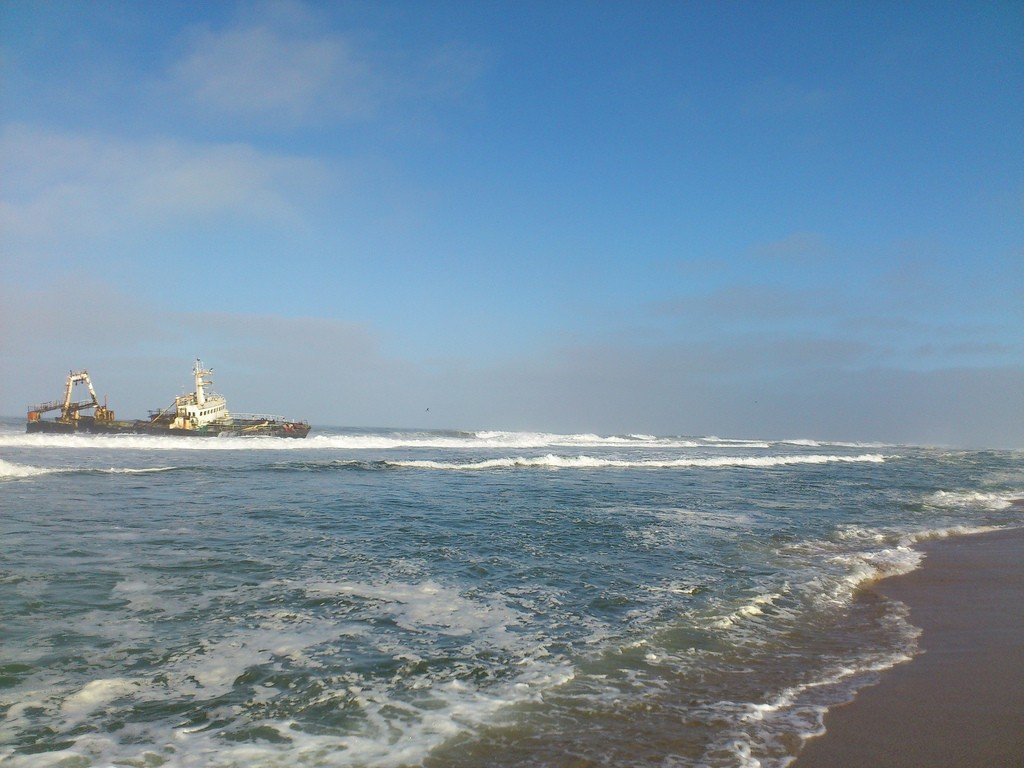
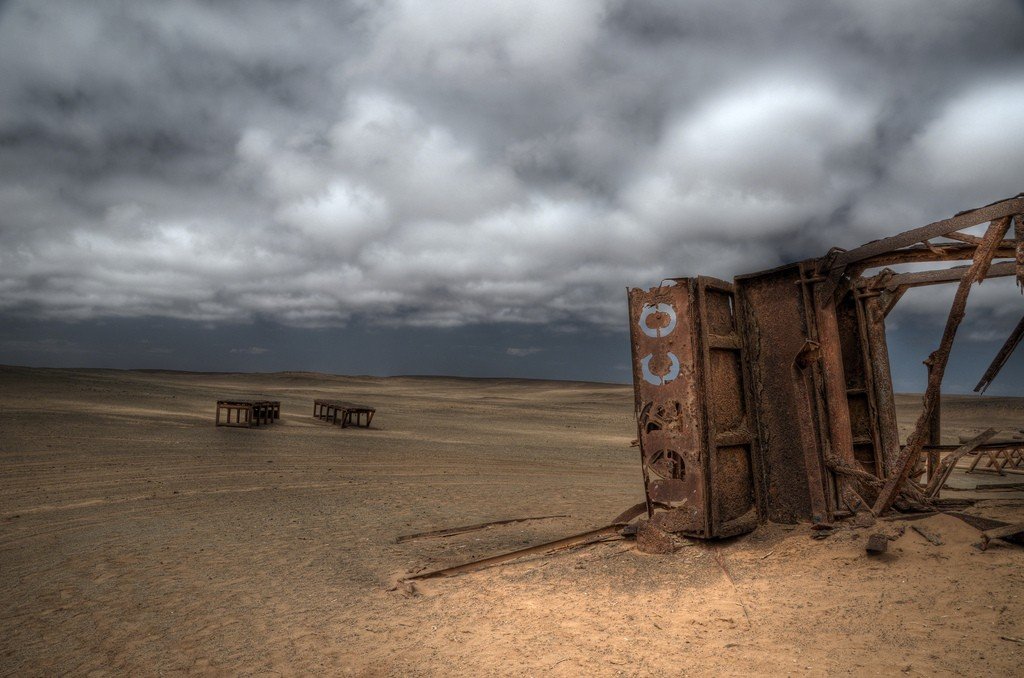
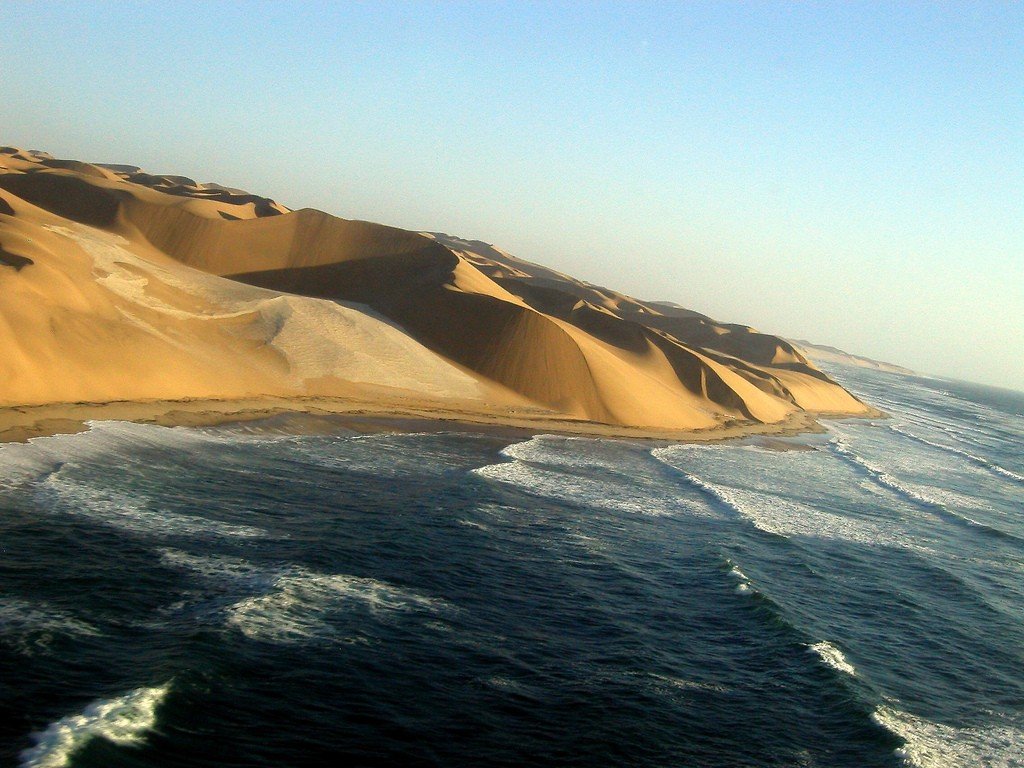
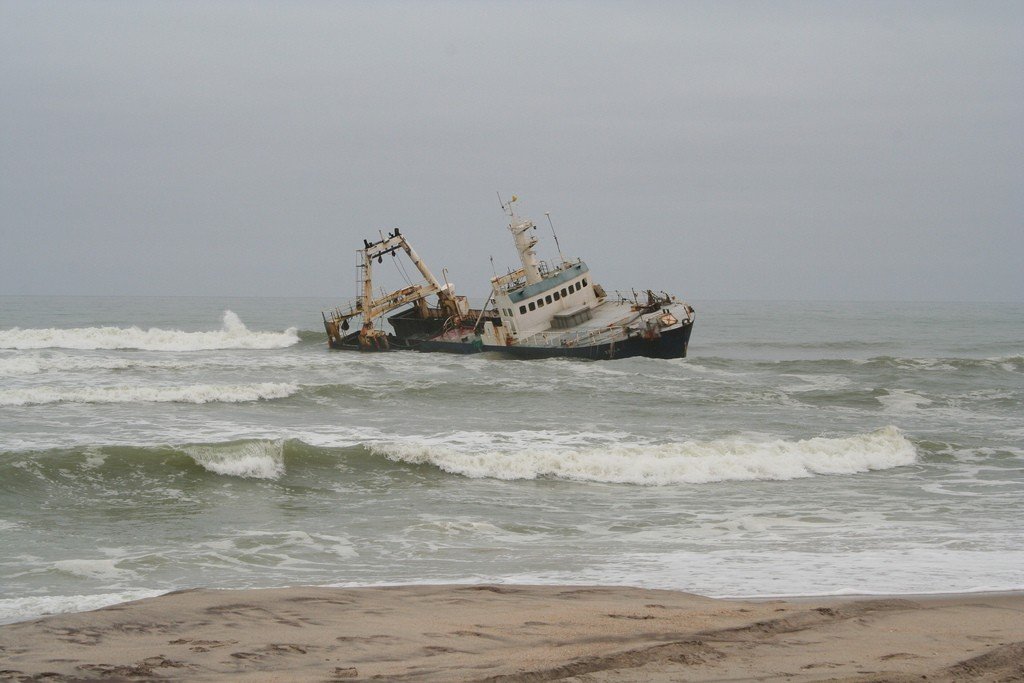
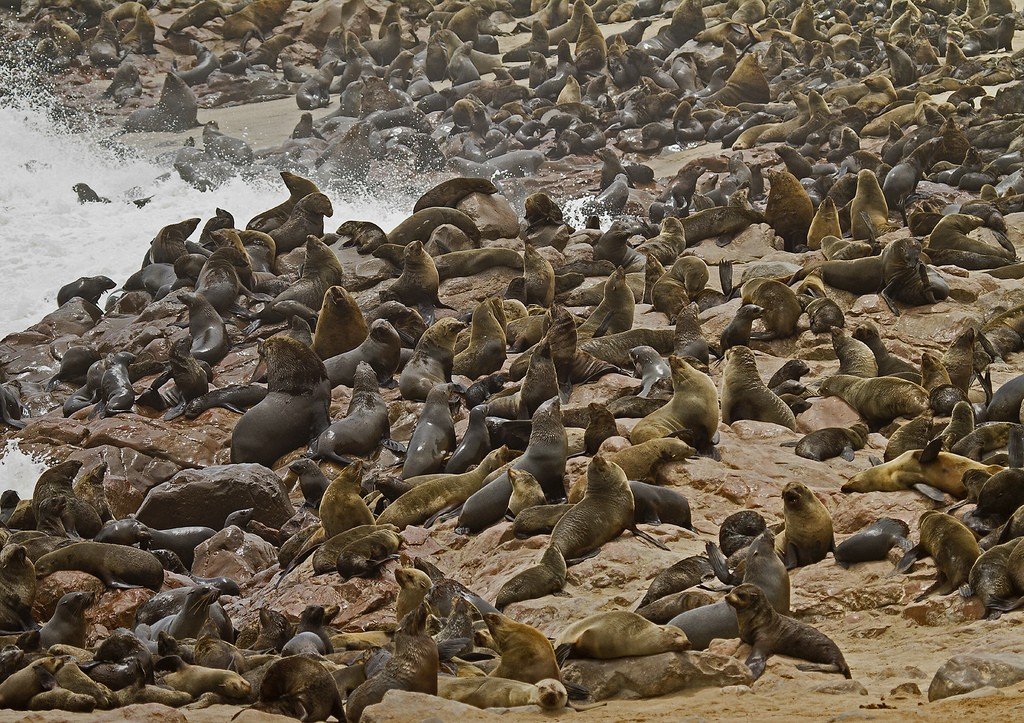
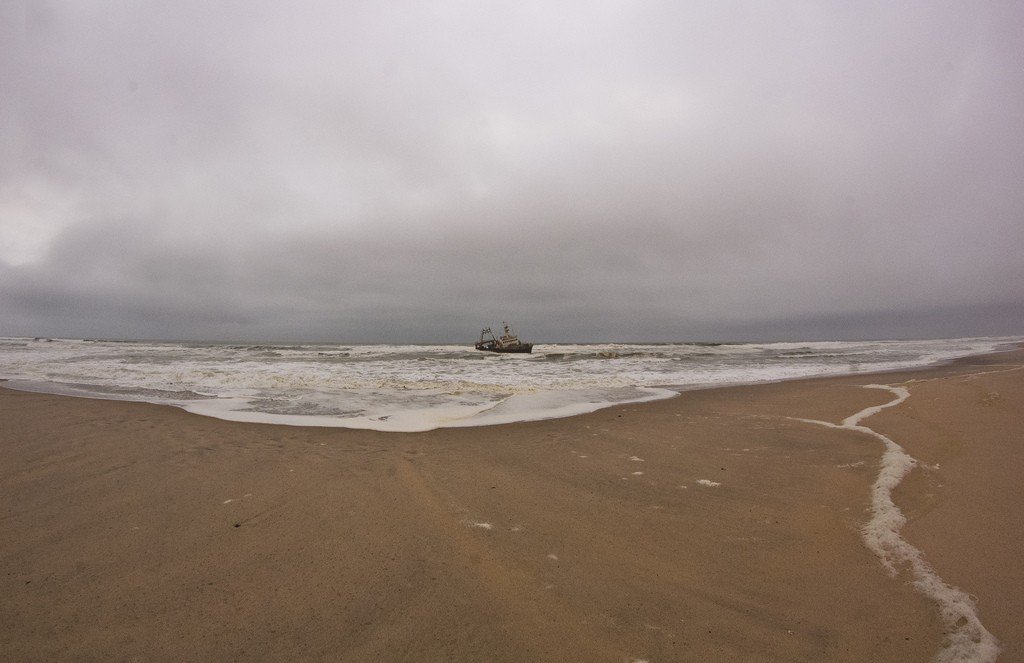
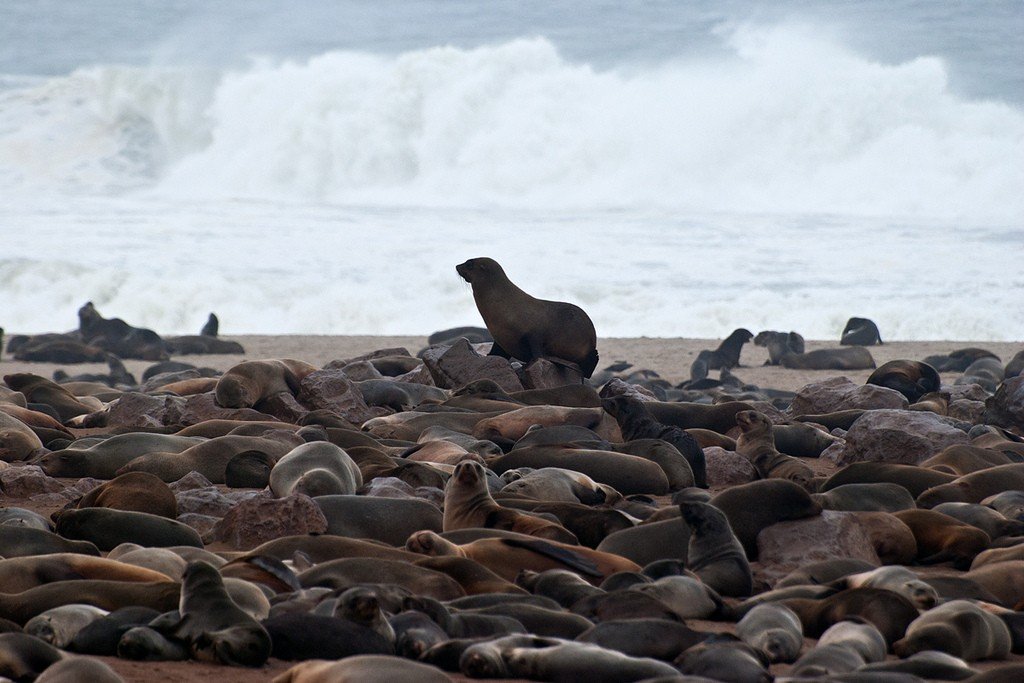
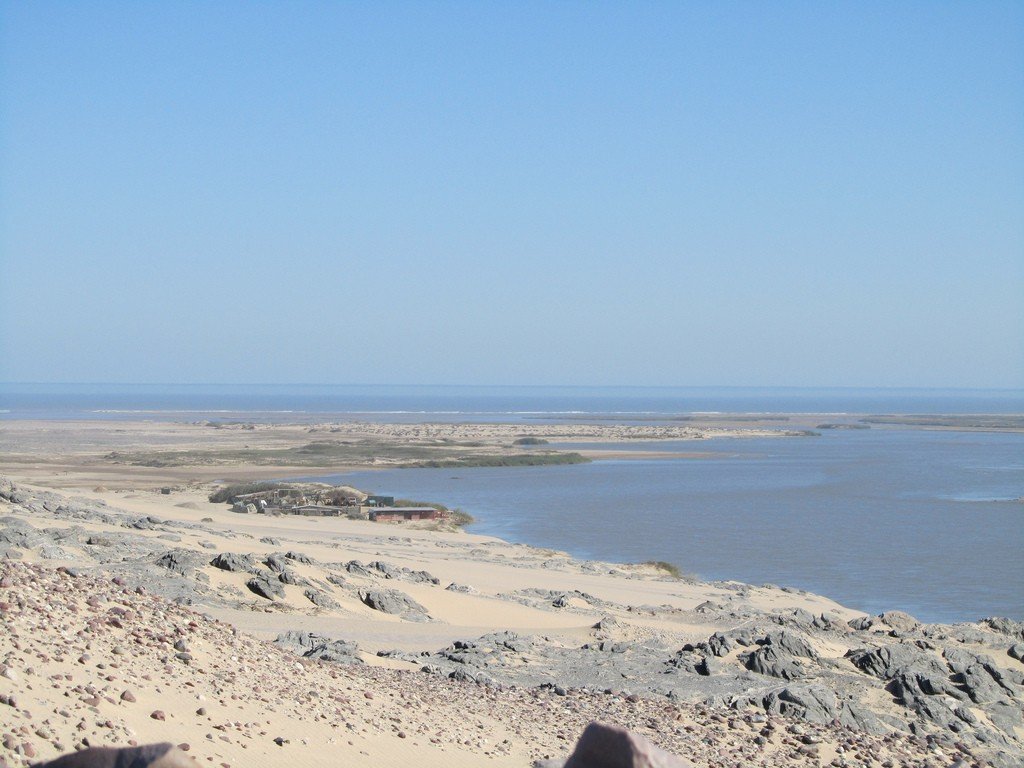
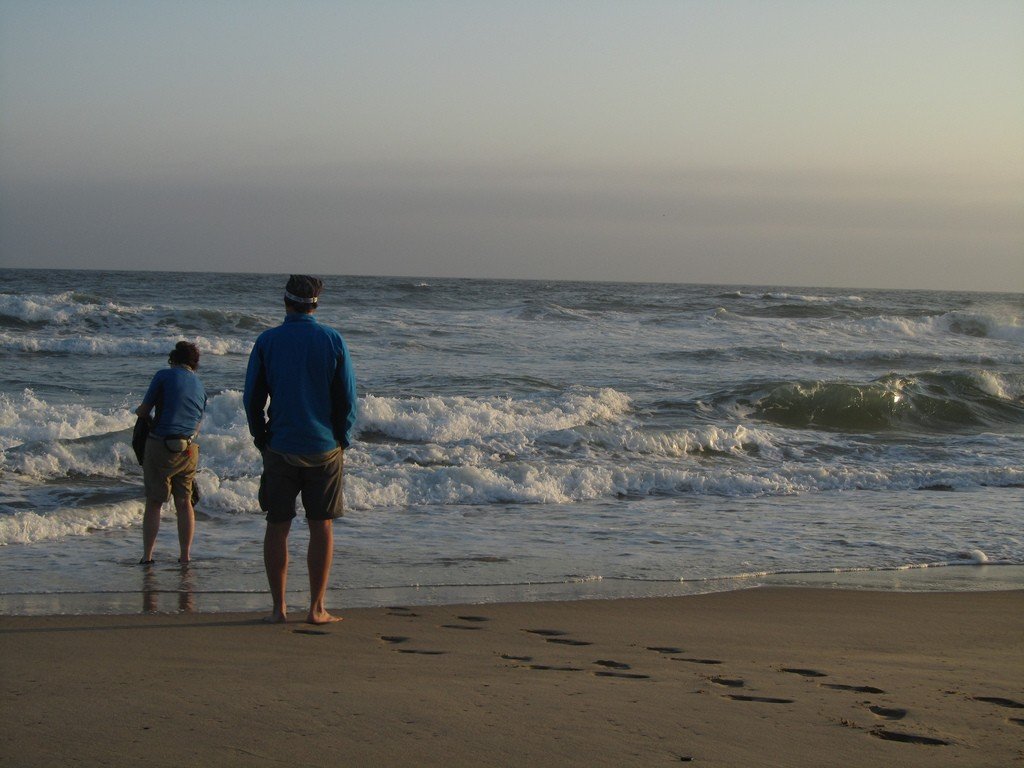
General Information
Some lie a considerable distance from the water. For example, the wreck of the German ship Eduard Bohlen is half a kilometer from shore, as desert winds constantly carry sand out to sea, gradually pushing the shoreline westward. The dinghies could have crossed the surf line and come ashore, but the surf in those places is so strong that it is almost impossible to cross it in the opposite direction on oars. Victims who were lucky enough to survive the shipwreck and reach land found themselves in the midst of one of the driest and most inhospitable deserts in the world, hundreds of kilometers from human settlements and sources of drinking water; of course, they had little chance of survival and died on the shore, which is why it got its name.
.The Skeleton Coast covers an area of 2 million hectares – a bleak, haunting landscape including sand dunes, canyons and mountain ranges. The dunes here vary from low, hilly dunes to transverse dunes and crescent-shaped dunes. When crumbs of pebbles consisting of agates, lava rocks and granite slide down their steep slopes in the wind, a sound resembling a loud whisper is heard in the air. Windswept dunes and flat plains give way to uneven canyons and flat mountains with brightly colored walls of volcanic rock.
.
The climate here, unlike the arid deserts, is also amazing. Dense fogs and cold sea breezes, the result of the Benguela Current, clashing with the extreme heat of the Namib Desert, resulting in stark temperature contrasts. However, a surprisingly large number of plants and animals survive in such conditions. Elephant’s foot grows in the cracks of rocks and stones, and desert succulents and lithopediums that resemble small stones suddenly bloom with tiny yellow flowers. Elephants can be found not far from the coast, feeding on parchment-like reeds and grasses, as well as on tree foliage fed by underground springs. The hardy oryx antelopes make themselves at home here and can go for weeks without water. Giraffes, brown hyenas, ostriches, rare black rhinos and even lions are found in Damaraland and Kaokoland, where they find fresh water and better food.
.If you are lucky enough to be one of the visitors to visit the Skeleton Coast, you are unlikely to forget this journey through time into a completely forgotten world.
.Due to the fog belt, temperatures along the coast vary widely, from +6 to +36°C, but it never gets below zero. Inland areas, although warm in the morning, it gets cooler in the evening. Due to the lack of moisture, the nights are particularly cold.
The southern part of the Skeleton Coast is part of the West Coast National Tourist Area. The fish-rich sea attracts many fishermen here, who organize crowded fishing camps. One of these camps later became a real town, Gentisbugt. The northern part of the Skeleton Coast from Torra Bay to the border with Angola is covered by a national park with limited access.
.
The northern part of the Skeleton Coast is covered by the conservation area of the Skeleton Coast National Nature Park. Its territory starts in the north from the Ugab River and stretches 500 kilometers to the Kunene River on the border with Angola. The reserve has an area of 16,000 km² and borders the Kaokoveldu region to the west. The territory of the reserve is divided into two zones: southern and northern. Access to the southern part of the park is free, while the northern part can only be visited by groups organized by licensed tourist organizations; these groups must adhere to special rules of stay and are not allowed to stay overnight in the reserve.
.
The entrance to the reserve is a few kilometers before the Ugab River, whose bed cuts a deep, winding canyon through marble, dolomite and shale rocks. Near the entrance, the terrain is a rubble desert, only 100 kilometers north, near Torra Bay, begin the expanse of dunes.
.
Near the Guab River there is an abandoned oil rig, where Capuchin cormorants now nest. A few kilometers north of Torra Bay, the hull of the wrecked ship Atlantic Pride lies ashore; a nearby canyon cut into the bright sands contains the desert’s only waterfall.
.In the northern part of the reserve, near the Goarusib River, there is another natural monument that can not only be seen but also heard, the so-called Roaring Dunes of Terrace Bay. Due to the properties of the sand of which they are composed, with certain wind strength and direction it is possible to snowboard down these dunes; the resonant vibrations in the sand create a rumble similar to the sound of a running airplane engine, which can be heard several kilometers away.
.